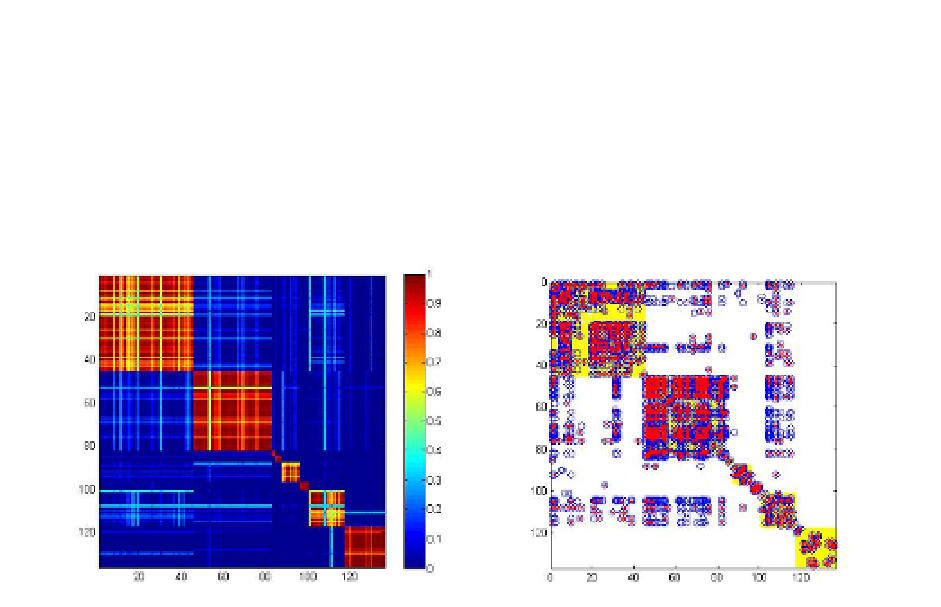Image Processing Reference
In-Depth Information
given topology (red dots). We found that both recommenders mostly agree on the priority of
intra-community links, but put different weights on inter-community predictions.
Depending on a purpose of recommendation we may select different prediction criteria. Since
new links change topology, which in turn affects dynamical properties of the network, the
recommendations may be seen as a distributed control driving the network evolution.
In general, the selection of topology-based recommendation criteria and their verifications
are the
open
problems.
Currently we
are running
experiments to
evaluate
different
recommendation criteria and its acceptance rates.
(a)
(b)
Fig. 20. Combined BT and phone-call networks, nodes are ordered according to detected
communities: (a) color-coded pair-wise correlations using dynamical systems; (b) links
recommendations using modified Katz predictor (blue circles), adjacency matrix is marked
by red dots, all possible intra-community links are shown by yellow squares.
8. Conclusions
In this chapter we present the framework for multi-membership communities detection in
dynamical multi-layer graphs and its applications for links predictions/recommendations
based on the network topology. The method is based on the dynamical formulation of
modularity using a random walk and then extended to coupled dynamical systems to detect
communities at different hierarchical levels. We introduce attractive and repulsive coupling
and dynamical link updates that allow us to make predictions on a cooperative or a competing
behavior of users in the network and analyze connectivity dynamics.
To address overlapping communities we suggest the method of soft community detection.
This method may be used to improve marketing efficiency by identifying users
which are strongly relevant to targeted groups, but are not detected by the standard
community detection methods. Based on the soft community detection we suggest
friend-recommendations in social networks, where new link recommendations are made
as intra- and inter-clique communities completion and recommendations are prioritized
according to similarity measures modified to include multiple-communities membership.
This
developed
methods
are
applied
for
analysis
of
datasets
recorded
during
Nokia

